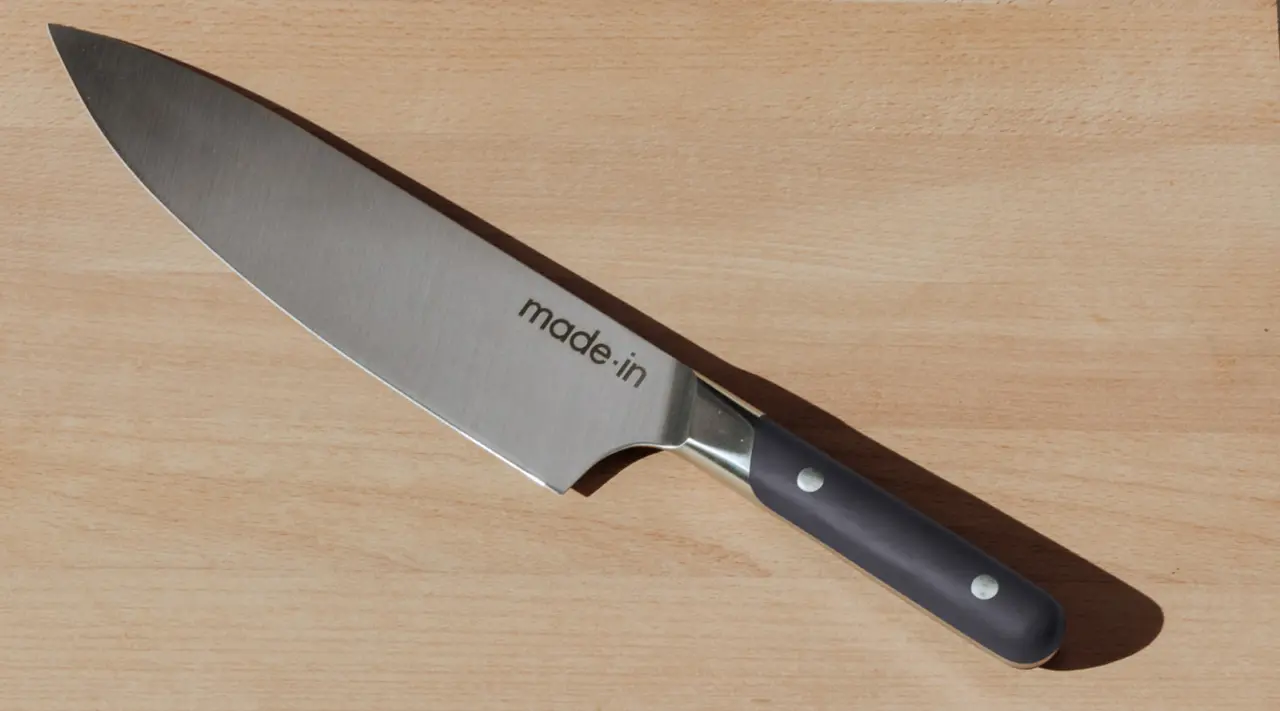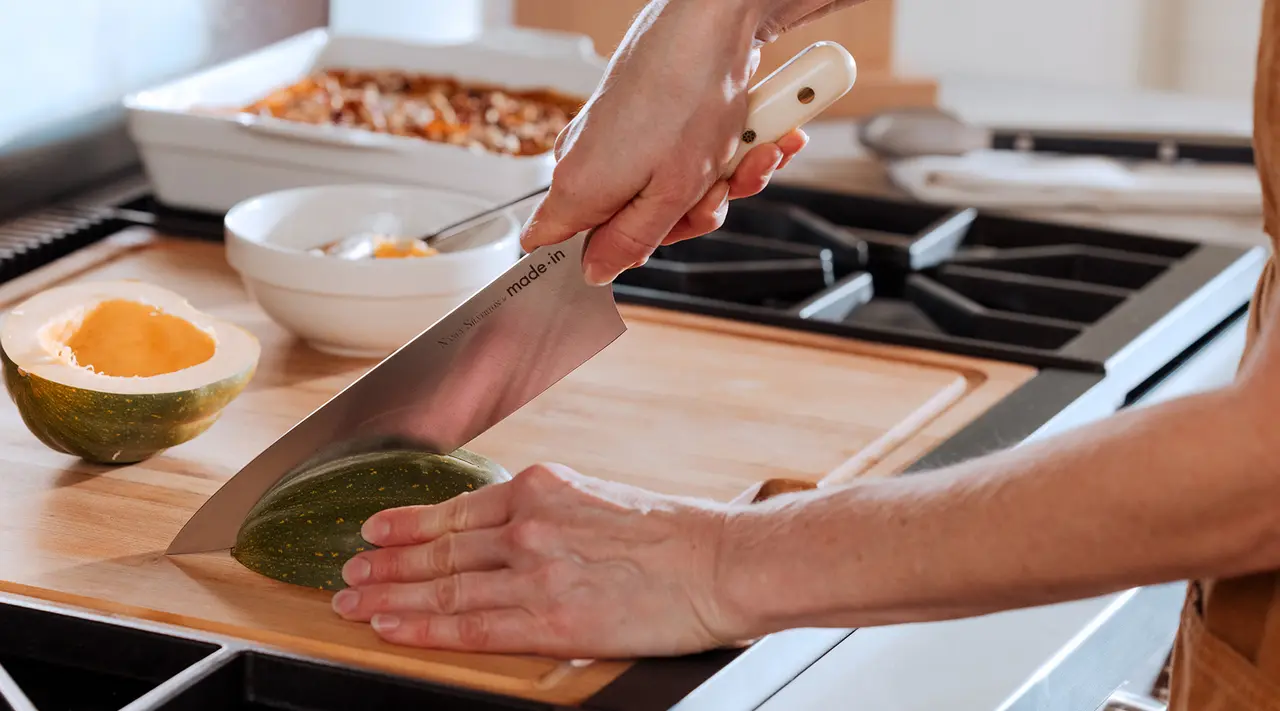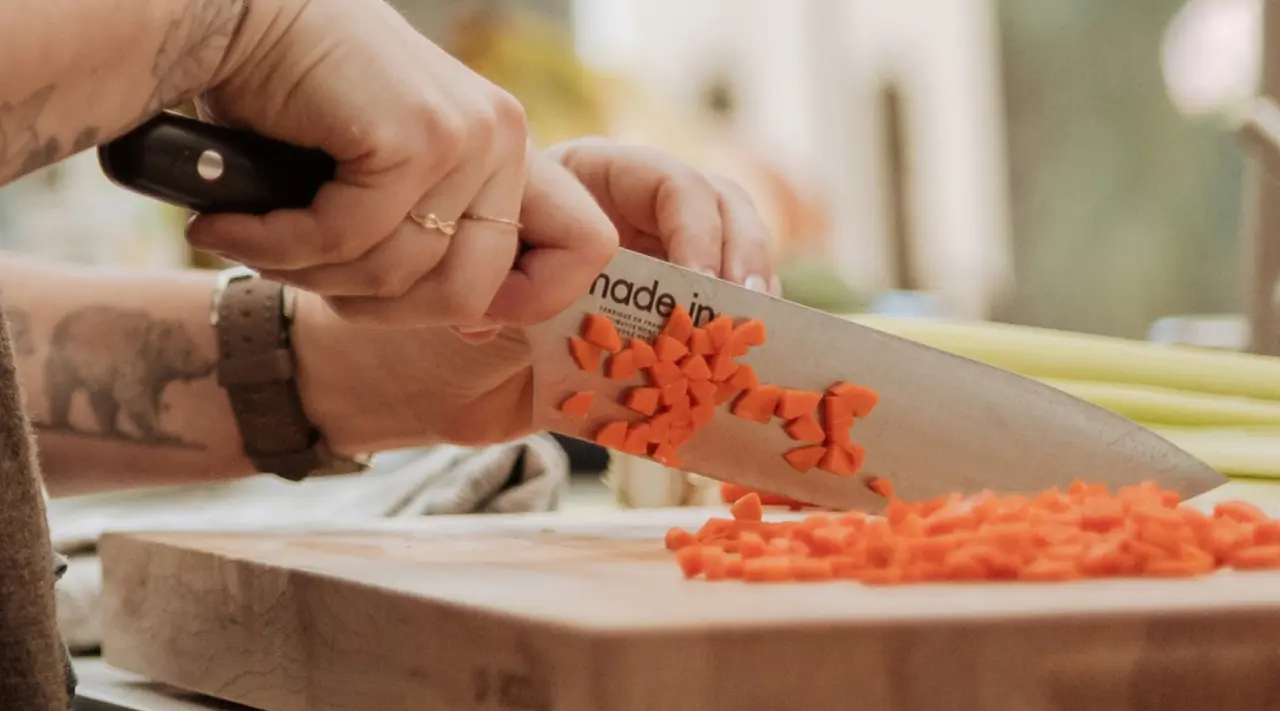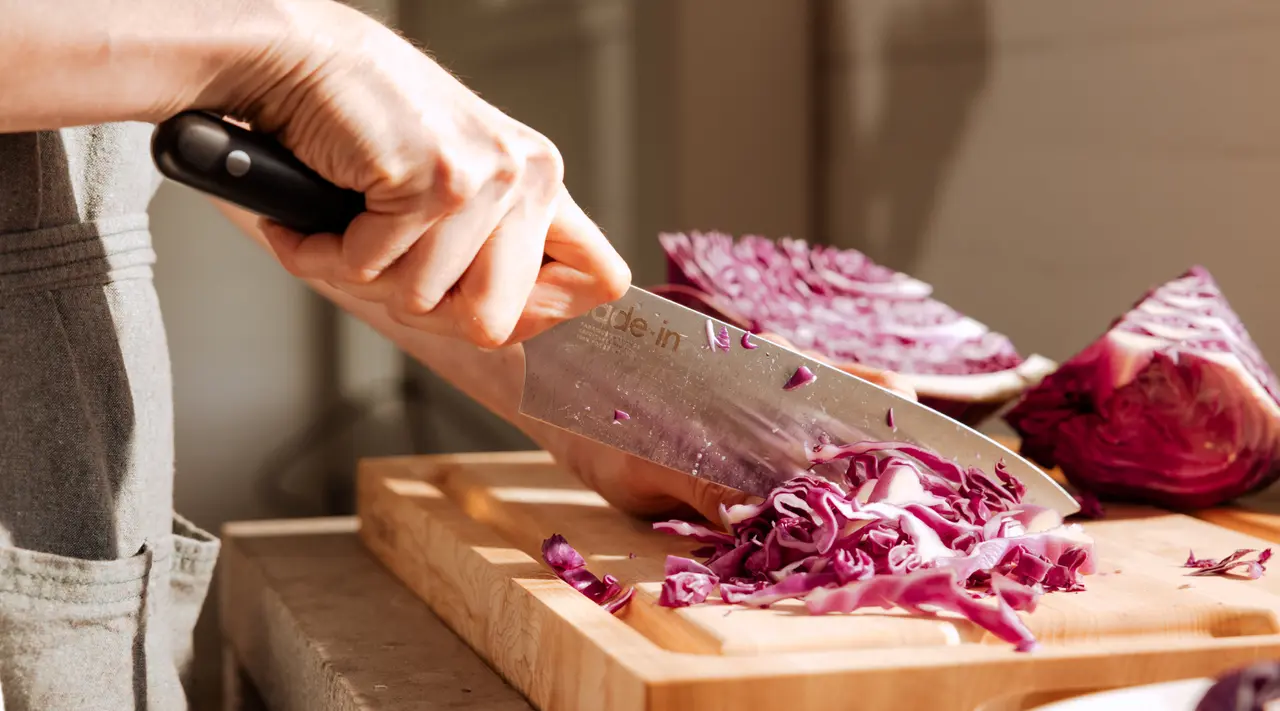If you had to choose one knife to use for the rest of your cooking career, what would it be? A serrated knife works well slicing bread, and a small paring knife does wonders for precision tasks like hulling fruit. But a chef’s knife might be the most versatile knife of them all.
A chef’s knife is used for all the standard kitchen tasks: cutting, chopping, slicing, and dicing. There are many styles of chef knives out there, but our Chef Knife combines the utilitarianism of German blades with the precision of Japanese knives to give you a tool that can do it all. Here’s what to use your chef knife for, and why you should get one ASAP if you don’t already have one.
What Is a Chef Knife?

A chef knife’s blade is long, triangular, pointed, and slightly curved; this universal design lends more efficiency, as you can keep the blade on the cutting board and rock it back and forth to make cuts. Like all our knives, our Chef Knife is both full tang and fully forged—made from a single rod of stainless steel that extends from tip to handle—which makes for a sharp, perfectly balanced blade.
What Is a Chef Knife Used for?

A good chef knife is indispensable and able to work through all parts of meal prep: dice an onion, smash garlic cloves, break down a chicken, chop a winter squash. You can also use a chef knife to carve or slice cooked proteins like chicken, pork chops, and steak if you don’t have a carving knife.
How to Use a Chef Knife
The most common cutting techniques for a chef knife are the slice, mince, dice, julienne, and chiffonade. Slicing is the most straightforward: to slice an onion, for example, trim off its root and stem ends, remove the peel, then cut the onion in half. Rest the onion halves on their flat surface and slice the onion as thick or thin as you’d like.
To mince, you’re making very small pieces that will incorporate easily into your food—think garlic, rosemary, and other ingredients with strong flavors. Dicing means cutting pieces into uniform shapes, usually cubes or rectangles, so they cook evenly. To julienne, you’re trimming an ingredient into matchstick-size pieces for a slaw, salad, or soup, for example. And to chiffonade, which means “little ribbon” in French, you’ll trim leafy ingredients like collard greens or basil by stacking them on top of each other, rolling them tightly, and then thinly slicing with your knife.
How to Choose the Right Chef Knife for You

Our Chef Knives come in two sizes, 6 inch and 8 inch. You may also see larger chef knives on the market, which can be good for cutting large pieces of meat, especially if you need to cut through bones. Ultimately we prefer and recommend the standard 8 inch or slightly smaller 6 inch.
Use a 6 inch chef knife if you want to perform precise kitchen tasks, like chiffonading herbs or greens or trimming pastry. An 8 inch chef knife is more versatile, as it can handle smaller and bigger tasks alike.
Consider the size of your hands when choosing a knife, and which weight you prefer: our 6 inch chef knife is 7 ounces, while the 8 inch is 8 ounces. Our knives also come in a variety of handles, from slip- and stain-resistant polymer to sustainably sourced wood.
How to Safely Use a Chef Knife

Since you have a quality knife, make sure you’re using it correctly so it will last for years. This applies to all our knives, not just the Chef Knife—proper and safe use is essential when wielding any blades in the kitchen.
Cut on the Right Surface
First, check your cutting surface. Your knife will dull faster if you’re cutting on hard surfaces like stone or glass cutting boards. Instead, go for a wooden butcher block or plastic cutting board—in addition to being better for your knife, these absorb shock better, making cutting tasks easier on your wrist as well.
Hold Correctly
We recommend using the pinch grip to hold your chef knife. To do this, curl your pinky, ring, and middle fingers around the base of the knife handle and pinch on opposite sides, where the handle meets the blade. Your pointer and thumb should be pinching the blade, not the handle. This grip ultimately leads to more control while you’re using the knife, which means you’re less likely to cut yourself.
Practice, Practice, Practice
The best way to improve your knife skill is practice. Watch a few videos focused on knife skills, then imitate what they do. If you’re more of an in-person learner, take a cooking class that focuses on improving knife skills. Then, practice, practice, practice. You’ll be cutting confidently in no time.
How to Care for a Chef Knife

It happens to us all: there will come a time when your knife will start to dull and show its age. Here's how to take care of your blades so when that happens, you're well prepared.
Hone and Sharpen
Thankfully, routine honing and occasional sharpening keeps your knife in tip top shape. You have a few options when it comes to sharpening, by which we mean grinding down the metal to refine the blade’s edge. We vastly prefer using a sharpening stone (also called a whetstone)—not only does it provide the most control, it also looks cool once you master it. Check out our guide on sharpening knives to learn more.
In between sharpening, you should also hone your knife with a long metal or ceramic rod, known as a honing steel, honing rod, or sharpening steel. Honing realigns the knife’s sharp edge, rather than sharpening, which removes steel. You can safely hone your knife before each use without worrying about wearing down your knife, while you should only sharpen your knife a few times a year.
Clean Your Knives
The other hugely important thing is to clean your knife after each use, or else you risk ingredients getting stuck to the blade and potentially causing rust. Depending on the level of grime, a simple hand wash with soap and warm water will do. For stuck on particles, soak the blad first. (And never put that knife in the dishwasher!) But if you’ve got rust spots, we have four solutions for you.
Ready to Chop?
When you buy our Chef Knife, you’ll be sourcing it from Thiers, France, the birthplace of the modern chef knife, where fifth-generation bladesmiths continue to make it the knifemaking capital of the world. Once you choose the chef knife that’s right for you—or perhaps for the favorite cook in your life—with proper care and cleaning, it’ll last a lifetime.































